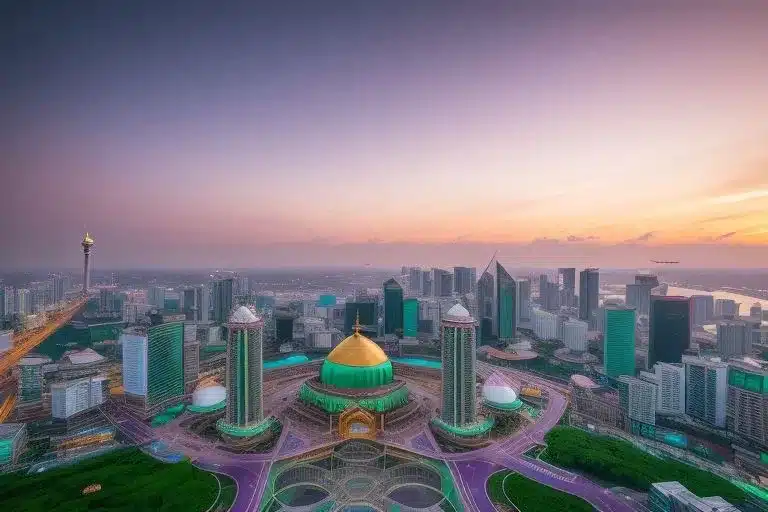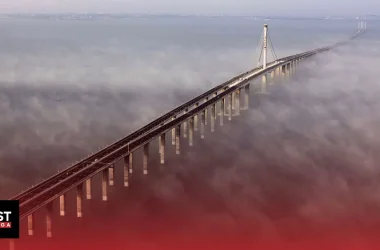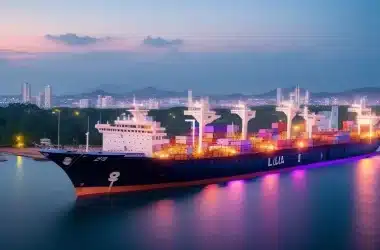As part of the Belt and Road Initiative, China invested billions in many developing countries. One of those countries is Brunei, a small Islamic sultanate in Southeast Asia with a population of only 450,000 people.
Its government has been racing against time since its oil and gas reserves started to run dry, resulting in an economic decline that lasted for years.
Although Brunei’s main resources were running out, China still offered the country a lifeline and became one of its largest foreign investors. On top of this, the Chinese president Xi Jinping surprisingly expressed his desire to increase trade between China and Brunei.
So why is China drawn to this tiny sultanate that appears insignificant at first glance?
A small but wealthy country
Many of you probably have never heard of Brunei before, which is understandable since this country is small with a population of only 450,000 people.
Brunei is an Islamic state which follows Sharia law, and its Sultan, Hassanal Bolkiah, is one of the world’s longest-reigning and few-remaining absolute monarchs. He was crowned in 1968, after his father abdicated the throne. The Brunei royal family members are all extremely wealthy, and they are relatively popular among their subjects.
The reason for this is the high standards of living in the country. You would probably be surprised to hear that Bruneians don’t pay income or sales taxes, and the Sultan regularly gives away land lots and housing to citizens under various government schemes. Additionally, citizens in Brunei enjoy free education and health care.
How can Brunei afford to do this?
It’s all thanks to its rich oil and gas reserves. In fact, Brunei is the third-largest oil producer in Southeast Asia, and oil accounts for around 62% of the country’s GDP and is the source of 90% of government revenues.
Oil production might’ve helped raise Brunei’s standards of living and create a lot of wealth for its royal family, but there’s no doubt that the country is putting itself in so much risk by heavily depending on one source of income. What makes it even worse is that oil is destined to eventually run out.
Brunei’s oil risks
In the midst of a global economic slowdown, demand for oil is declining all over the world. For instance, crude oil prices dropped from $100 to $84 per barrel in September, a decline of more than 10% in just one week.
It’s no surprise that instances like this caused Brunei to question the future of its economy, and the need to diversify the economy was recognized when oil production declined in recent years. As a response, the government made plans to invest more in non-oil industries such as Islamic banking and eco-tourism, since 70% of the country is tropical forests. In addition to that, Brunei sought to increase foreign investment.
China’s role and the BRI in Brunei
This is where China comes in, offering a lifeline in the form of the Belt and Road Initiative to the small Southeast Asian country.
Thanks to the Belt and Road Initiative, the two countries established the Brunei-Guangxi Economic Corridor (BGEC) in 2014 in order to boost trade and investment between them. Plans for the BGEC include joint investments that are worth $500 million, meant to increase Brunei’s economic engagement with China’s southern Guangxi Zhuang region, which has direct access to the South China Sea.
Thus, China established a strong presence in the Sultanate, and became one of its largest foreign investors. A good testament for this growing influence, is that in a time when international banks like HSBC and Citibank ceased their operations in Brunei due to the country’s economic slowdown, Bank of China established its first branch.
China was also behind Brunei’s largest project funded by foreign investment, which is the Pula Muara Besar oil refinery and petrochemical complex. This project was launched in 2019, with the first phase costing around $3.45 billion.
The Chinese company responsible for the project, Zhejiang Hengyi Petrochemical, later invested a further $13.65 billion to expand the refinery’s capacity and build more petrochemical facilities. It is important to note that Hengyi owns 70% of the refinery, while the Bruneian government owns the other 30%.
In general, China is keen on deepening its connections with Brunei, as demonstrated by the Chinese president Xi Jinping in a very recent meeting with Brunei’s sultan in San Francisco.
During the meeting, Xi said that the Chinese government would welcome more exports from Brunei, tell more Chinese companies to set up shop in the Southeast Asian country, and increase cooperation in different areas.
Why China is so interested in Brunei
While President Xi might speak highly of the economic reasons behind the cooperation between the two countries, the real reason might have to do with the South China sea territorial disputes.
For centuries, China has claimed the entire South China sea, angering competing claimants like Vietnam, the Philippines, Taiwan, Malaysia and Brunei, who staked their claims on various islands and zones in the sea.
This didn’t stop China from backing its claims by building multiple islands in the South China Sea, in order to capitalize on the major shipping route, where roughly 80% of global trade by volume and 70% by value is transported.
Even though Brunei is supposed to be a rival claimant to China, it has kept silent on its own claim to a relatively small area off northern Borneo, unlike some of the more aggressive claimants in the region.
Desiring to diversify its economy away from oil, Brunei chose to focus on enhancing its growing trade with China, rather than getting into territorial disputes.
In the meeting mentioned earlier, President Xi Jinping and Sultan Hassanal Bolkiah expressed that China and Brunei would work together to promote positive progress in joint maritime development and jointly safeguard peace and stability in the South China Sea.
This isn’t China’s first time developing relations with a Southeast Asian country in order to safeguard its own interests in the South China Sea. In 2013, China became the largest foreign investor in Laos, and three years later, the Laotian prime minister voiced the country’s support for China’s stance on the South China Sea when Laos held the rotating chairmanship of ASEAN.
This strategy seems to have worked with Brunei as well, since the Sultan said recently that Brunei stands ready to further strengthen cooperation with China within the ASEAN framework, and looks forward to an early conclusion of the Code of Conduct in the South China Sea.
In the end, it all boils down to China wanting to exert more influence in Southeast Asia so it gains more support in disputes with countries in the region. Other claimants to the South China Sea, like Vietnam, the Philippines, Malaysia and Indonesia are either China-wary countries or have treaties with China’s main rival, the U.S.
Therefore, Brunei is the only place where China would least likely meet any resistance to its maritime aspirations.
A win-win situation?
Despite the dangers that come with increasing Chinese presence and funding in developing countries, Brunei has so far benefited significantly from the Belt and Road Initiative.
For example, the multibillion-dollar refinery and petrochemical complex contributed to Brunei’s GDP by about 1%. The project also had a positive effect on the job market, creating around 3210 additional jobs in just 2019, of which at least 35% were taken up by locals.
However, depending on foreign investment alone isn’t enough for Brunei to establish a sustainable and diversified economy, so the country should empower its domestic private sector and explore new economic growth engines.
Disclaimer
Please visit and read our disclaimer here.









